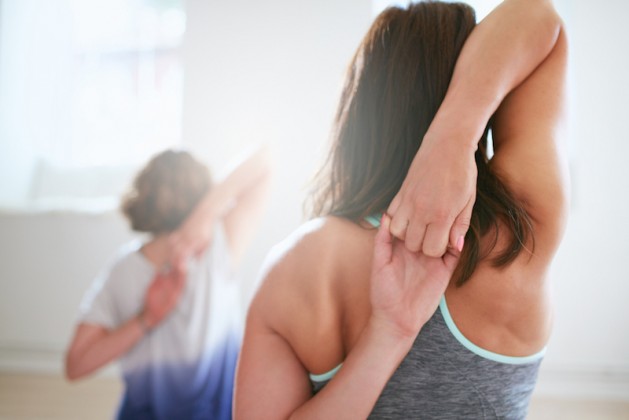
By now, the health benefits of exercise for the body and mind go totally uncontested. There’s no end to the studies and articles arguing that if you want to reduce the risk of numerous physical illnesses, depression and even memory loss, you need to work your muscles regularly.
In these discussions, the focus is usually on cardiovascular conditioning and strength training, with much less attention given to flexibility, despite the standard medical opinion that the latter is an essential part of staying fit and able. As a matter of fact, flexibility can help your body reach its peak fitness level, prevent injuries, and even reduce the risk of arthritis and more serious illnesses. Plus, if you’re flexible, you just feel better doing ordinary physical activities, whether you’re raking the leaves or grocery shopping. So which stretches should you do, and how long should you do them for?
Unless you’re a professional gymnast and need the flexibility of a piece of chewing gum, you probably will benefit most from about ten minutes of stretching a day. According to the American College of Sports Medicine (ACSM), “the position in which a slight stretch is felt should be held 15-30 seconds, and each stretch should be repeated 3-5 times on each side of the body.” Remember that it’s a stretch, not a punishment—if it starts to hurt, you’re going too far.
Exactly which muscles you need to stretch depends on which ones of yours are prone to developing problems, but generally speaking it’s a good idea to get in a little of each of the major muscle groups: upper body (arms, shoulders, neck), back, and lower body (thighs, calves, ankles). There are countless types of stretches you can do, so here’s just a few to get you started:
Upper Body Stretches
These are especially helpful if you have a sedentary lifestyle, need to work on your posture, or carry tension in your upper body.
- Neck muscles: Stand up with your back straight and tilt your head down towards your chest. Hold for about 15 seconds. Tilt your head back to its starting position and hold another 15 seconds. Be careful not to tilt your head back so much that it hurts.
- Chest muscles: Standing in a corner, bring your hands up to shoulder height and place them against the wall on either side. Keeping hands in position, lean body forward until a stretch is felt in the front of the chest.
Back Stretches
These are great if you are prone to lower-back pain or like to run for a workout.
First, lie on your stomach, legs straight and feet shoulder-width apart. Then place your hands on the floor under your shoulders and slowly lift your chest up. Hold for 15 seconds. Come to a standing position with feet shoulder-width apart and pointed to the right. Lift the toes of your foot off the ground, bend at the hip, and fold your body over. Hold for another 15 seconds. Repeat with the other leg.
Lower Body Stretches
These are especially helpful if you like to run, walk, bicycle, or use an elliptical machine.
- Hamstrings: Sit on the ground with legs straight in front of you. While keeping your back straight, gently lean forward from the hips. When you feel a stretch on the back of the thighs, hold for 15-30 seconds.
- Hip flexors: While standing on one foot, bring the other foot to the buttocks. Pull back gently, while keeping your hip straight and your knee pointed at the ground. If you have trouble keeping your balance, hold onto a counter or chair.
- Calves: Step forward with one leg, then shift your weight toward the front leg while keeping the back heel on the ground.
To really improve your flexibility, make sure to do these stretches regularly, ideally every day. They just take 10 minutes—you’ll be feeling better in no time!



